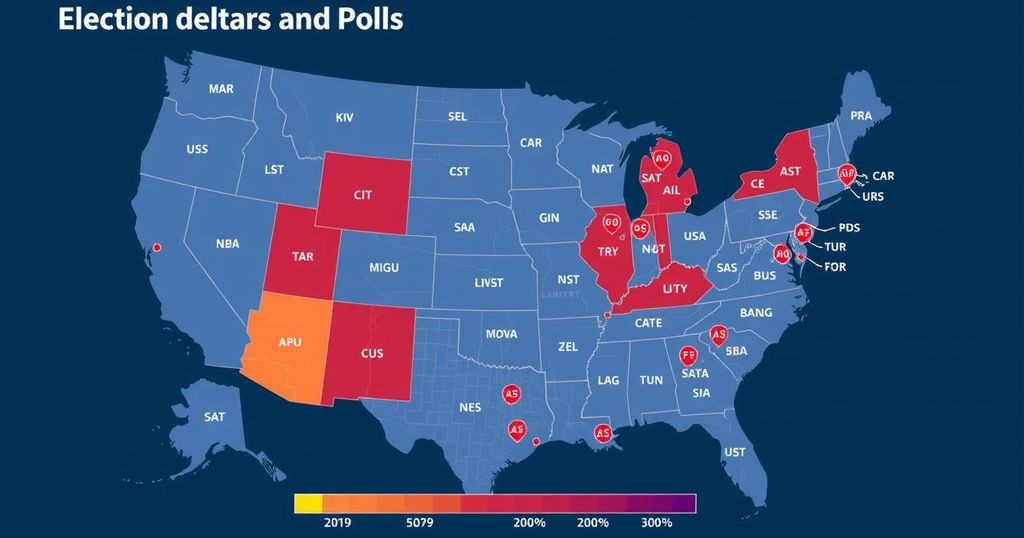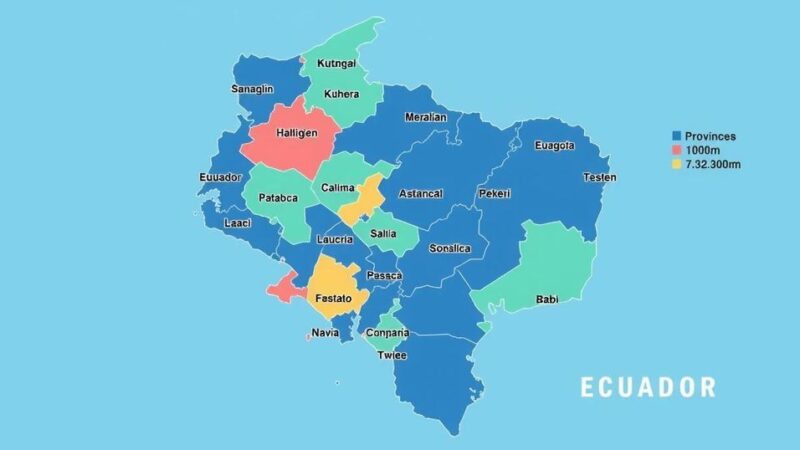An analysis of the upcoming presidential election highlights the intense competitiveness of key Toss-up states, with historical data indicating a trend toward narrow margins in electoral outcomes. Veteran strategist David Plouffe suggests all seven Toss-ups may be decided by less than one percentage point. Current polling shows varied results for House races, indicating slight movement towards Republicans, while some Democratic candidates maintain competitive standings in their respective districts. Observations of Senate and presidential candidate performances reveal intriguing dynamics as the election approaches.
As the presidential election draws near, the discussion surrounding the seven states identified as Toss-ups has intensified significantly. Veteran strategist David Plouffe, now advising the Harris campaign, posits that these states are likely to be determined by a margin of one percentage point or less, a statement reflected by historical trends that underline the narrow outcomes of crucial battlegrounds. Analyzing the presidential elections from 1976 to 2020 reveals a notable pattern: the last two election cycles have seen a marked increase in states that are decided by narrow margins, particularly during the Trump era. For instance, in 2020, Biden was able to reclaim states that Trump secured in 2016, indicating a swift political realignment in these close contests. Historically, the tipping point states—the states that ultimately determine the electoral vote outcome—have shifted over the years. The analysis of two-point margin victories since 1976 highlights that during the Obama administration, the tipping points leaned more Democratic, specifically in states like Colorado. However, recent elections have shown a trend towards narrower margins, creating an unpredictable electoral landscape. Moreover, as the election approaches, it remains evident that neither Democratic nor Republican candidates have effectively consolidated their positions in the key states. Recent polling indicates a slight advantage for Republicans regarding the House generic ballot, though this trend is complex, and results could potentially diverge in House-specific races. Polling data in competitive districts reveals a mix of results for both parties, with some Democratic incumbents holding slight leads in traditionally competitive areas. For instance, Representative Matt Cartwright shows promise in his Trump-won district, suggesting a degree of resilience among Democratic candidates in certain regions. As the race draws to a conclusion, the divergence in performance between presidential candidates and their respective Senate counterparts in battleground states merits attention. Observations suggest that Democratic Senate contenders may be performing better against their Republican rivals compared to the presidential race, although this dynamic has fluctuated significantly in recent electoral cycles.
The article delves into the upcoming presidential election, emphasizing the significance of the seven Toss-up states and historical voting patterns within these critical battlegrounds. It reflects on past presidential elections from 1976 to 2020, scrutinizing the shifting advantages between Democrats and Republicans in closely contested states. Additionally, it reviews current polling trends, particularly in House races, and examines the relationship between Senate and presidential candidate standings in crucial states. Ultimately, this comprehensive analysis seeks to illuminated the competitive nature of contemporary elections and the interplay of political dynamics at play.
In conclusion, the approaching presidential election underscores a highly competitive landscape, particularly in the designated Toss-up states. The historical analysis reveals a potential for closely contested outcomes, reinforcing the notion that both parties face challenges in securing clear advantages. As polling data continues to fluctuate, it remains imperative to observe the relationship between presidential candidates and congressional races, particularly in light of regional dynamics that have historically influenced electoral outcomes. The results of the impending election could thus represent a significant moment in the evolution of political affiliations across these critical battlegrounds.
Original Source: centerforpolitics.org






